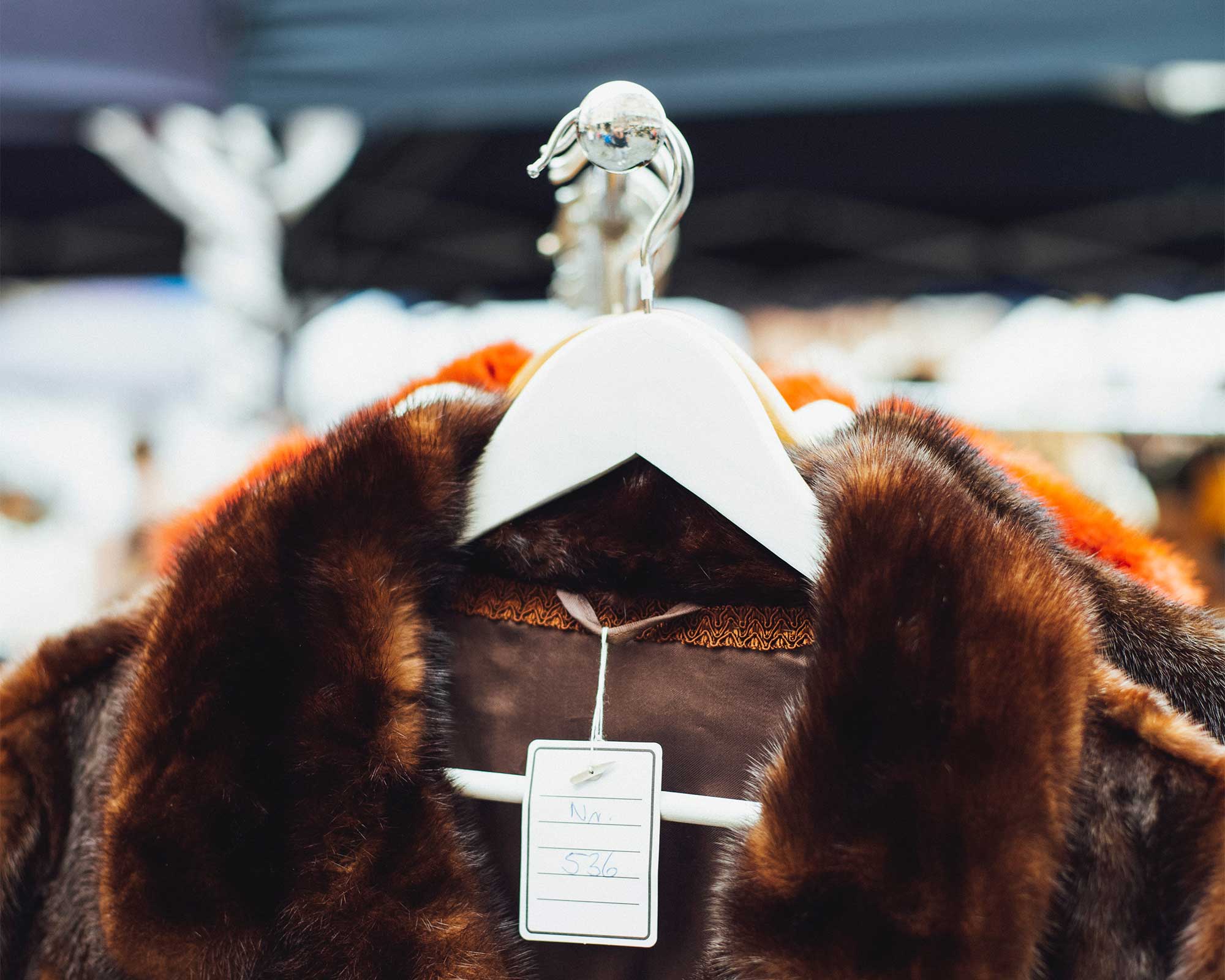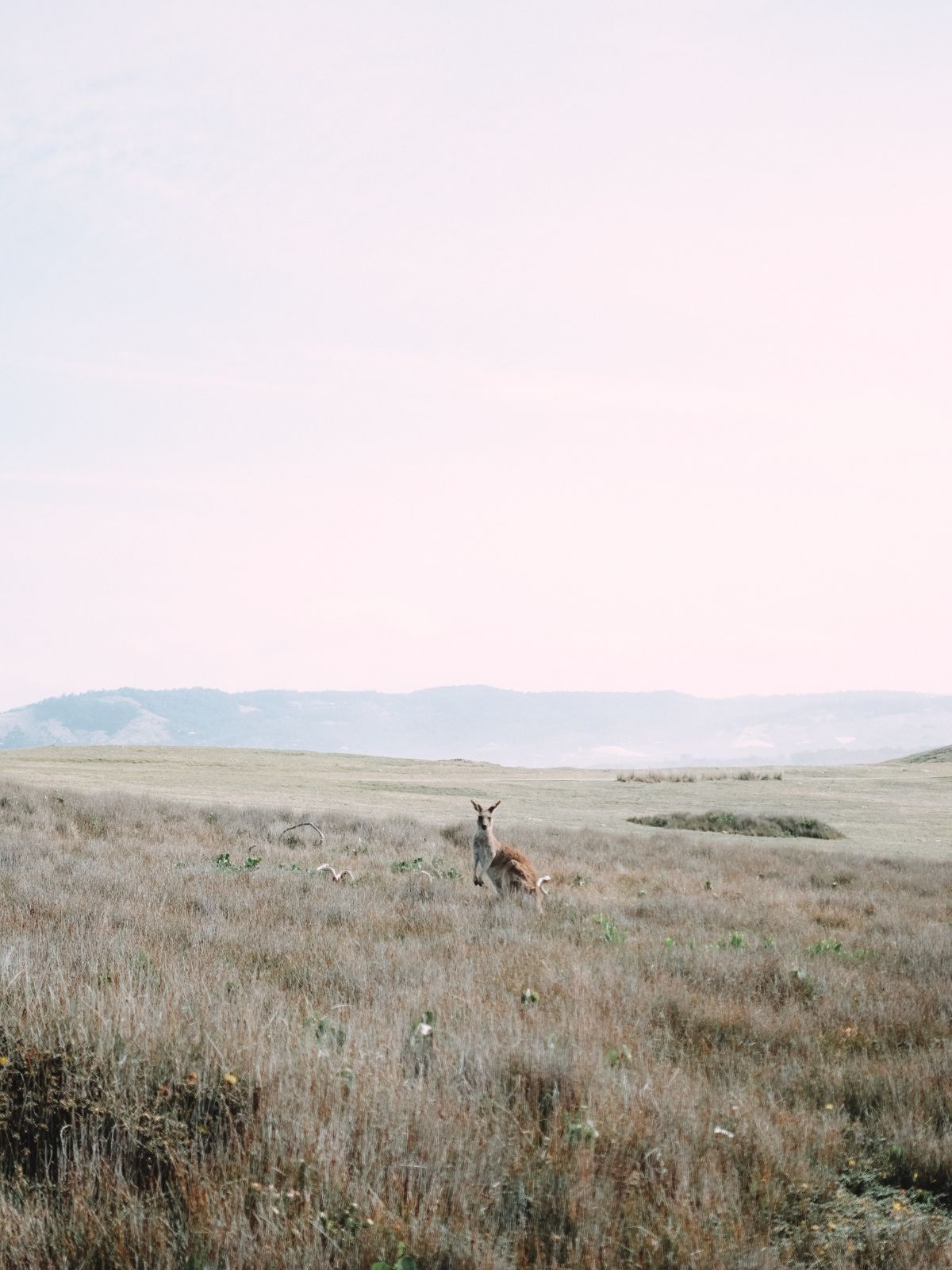The fashion industry is quickly turning fur into an unjust memory of the past. We’re seeing luxury brands, major retailers, entire cities, and potentially soon, all of Europe banning products made from animals kept in cages on polluting factory farms. While fluffy fashion isn’t going anywhere, we need sustainable, animal-free alternatives to take their place. So what are the best alternatives to fur?
Nothing warm and fuzzy about the fur industry
Everyone knows how soft and comforting fur can feel—so many of us love petting beloved, furry companion animals. The fur on wild animals like mink, foxes, and raccoon dogs feels very similar, but the conditions they are kept in for the fashion industry are anything but warm and fuzzy.
As much as 95% of all fur sold around the globe comes from animals confined to factory farms. These animals are wild—mink love to swim and can dive as deep as 30 metres, while foxes roam the land as wide as 10 kilometres—making their caged existences extremely distressing. On fur farms, animals are denied the freedoms of nature. Foxes receive 10 million times less space than they freely explore—usually a one metre squared wire cage.
The terror and anguish that animals face in fur supply chains should be reason enough to leave fur behind. But what research has shown is that there are even more reasons that it’s time to say so long to fur.
Joshua Katcher, Collective Fashion Justice board member, author of Fashion Animals, and fashion lecturer who has lobbied for fur bans in America, says that “sick and injured animals driven to physical and psychological distress languish on fur farms, sometimes even resorting to self-harm and cannibalism. They are prevented from engaging in even the most basic, natural behaviours like running, digging, exploring, socialising, or simply having their paws on the dirt.”
So much cruelty goes on in fur farms even before the animals are brutally killed far short of their natural lifespans. To hide all of this, Katcher says that “fur trade groups have made many attempts to combat an evolution toward a more ethical, sustainable, and innovative industry, and have spent a lot of money doing so.”
The environmental and human costs of fur
Fur production is so environmentally harmful that a French advertisement calling fur “natural” and “eco-friendly” was banned by advertising authorities, which labelled it “strongly misleading”.
Fur factory farms are major contributors to ammonia and phosphorus emissions due to the build-up of faecal matter on overcrowded farms. These emissions can lead to eutrophication, risking “dead zones” in surrounding waterways.
While fur is natural when growing out of the bodies of animals, the fur people wear is far from it. Industry-funded studies show that once fur is “dressed”—a process akin to the tanning of leather—it does not effectively biodegrade. Carcinogenic chemicals like formaldehyde and chromium are used, posing significant health risks—and even death—to fur dressing workers. Too, as we saw in the earlier stages of the COVID-19 pandemic, fur farms pose a major risk for the spread of deadly zoonotic diseases.
Animal fur shouldn’t be replaced by unsustainable alternatives
While Katcher tells me that “most fashion students and young designers I speak to today agree that something made in a horribly cruel and ugly way can no longer be seen as good design”, it’s common to hear quandary around what fur should be replaced with.
“Critics say faux fur relies on oil and consequently is not a good alternative. But a synthetic fur made in a responsible environment will always have a lighter environmental impact than animal-based materials,” explains Arnaud Brunois from faux fur artisan ECOPEL “The fur industry relies on oil-based industries as well.”
While this is true—and even conventional synthetic faux fur made from virgin raw materials (petrochemicals) has a significantly lower climate impact than animal fur—this doesn’t mean fossil-fuel derived fur is the ultimate solution. After all, the IPCC states that we must end all fossil fuel extraction.
It is entirely possible to create good products without petrochemicals. There is a lot of innovation in novel bio-based synthetics that could be exact chemical matches to the petro-synthetic, or be very similar.
Dr Sydney Gladman – Chief Scientific Officer at Material Innovation Initiative
Dr Sydney Gladman, Chief Scientific Officer at Material Innovation Initiative, believes it is “entirely possible to create good products without petrochemicals. There is a lot of innovation in novel bio-based synthetics that could be exact chemical matches to the petro-synthetic, or be very similar.”
Brunois and ECOPEL have explored this for some time, alongside synthetic recycling. “At ECOPEL, we believe in balancing nature and technology.”
ECOPEL’s original offering was a lower impact synthetic. Next, the artisans worked on a recycled synthetic faux fur, which they are now looking to improve again, by switching from recycled bottles for recycled ocean waste: “Our UMI collection is made from regenerated yarns produced from recycled waste collected from the ocean by Seaqual”.
Continuing to improve options for brands seeking more ethical and sustainable “fur”, a few years ago, ECOPEL launched KOBA, first used by Stella McCartney. Still partly synthetic, this is a “partially plant-based faux fur”, reducing reliance on fossil fuels. Just recently, the company launched GACHA, which is made from a variety of biodegradable polyester.
Faux fur of the future
According to key stats based on Good On You’s brand ratings, there is no evidence of fur use in the collections of 95% of total brands. While this number drops slightly to 89% in the luxury sector, the majority of luxury brands have banned fur in recent years. And while several countries have already banned fur farming, a European Citizen’s Initiative currently collecting signatures may see all fur farming and farmed fur product sales banned across the continent. For the sake of animals, the planet, and our collective health, it’s clear why there’s a growing movement against commercial fur.
Material innovation is aiding the industry in this move. And it’s well received by brands. Brunois works with many of the most luxurious fashion houses in the world and says that “the luxury industry is very excited about these innovations. It seems that the consensus is ‘no’ to animal fur and ‘yes’ to new generations of faux furs with a lower impact and a virtuous end of life.”
But, while significant progress in the next-gen “circumfaunal” material space has been made, there’s still room to grow. Material Innovation Initiative’s Chief Innovation Officer, Elaine Siu, notes that “there just hasn’t been enough dedicated R&D specific to the faux fur space.”
The overarching progress in the world of bio-based synthetics and plant fibres will definitely also accelerate the creation of high-performance and sustainable next-gen fur.
With the private capital investment in next-gen material companies doubling from 2020 to 2021, reaching US$980 million, we expect to see more breakthroughs, including in the next-gen fur category. The overarching progress in the world of bio-based synthetics and plant fibres will definitely also accelerate the creation of high-performance and sustainable next-gen fur.
We have seen so much progress in the next-gen fur space in the last few years, and this growth is only further flourishing. While it’s inevitable that the future of fur is animal free, it seems the greatest limit to our idea of what faux fur is and will be is our imaginations. Scientists and material innovation experts are sure to continually surprise and inspire those across the fashion landscape.



















